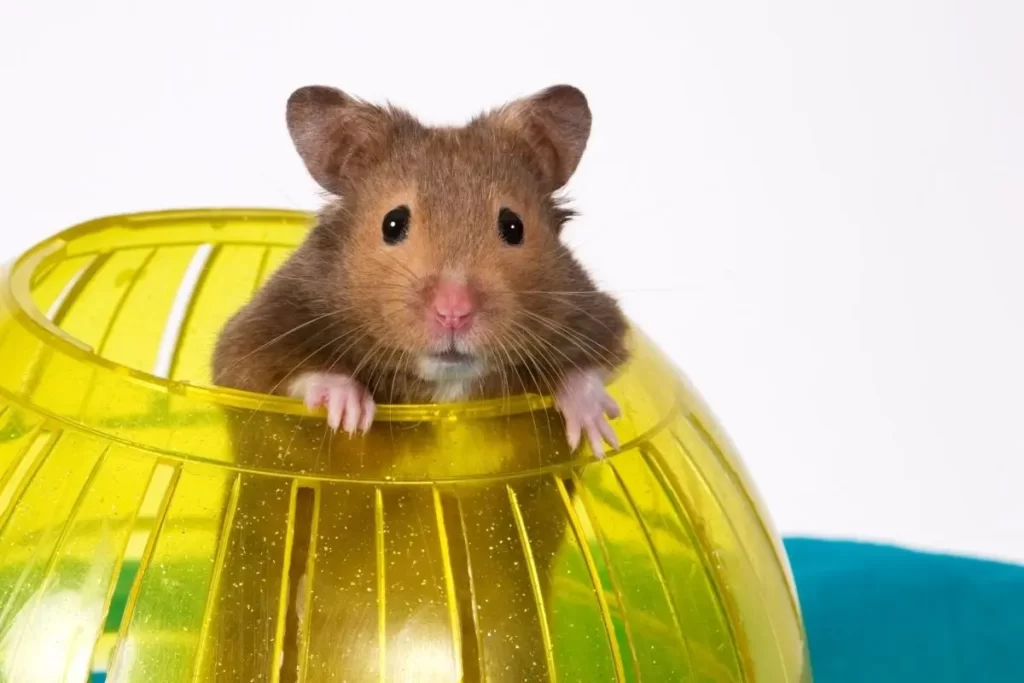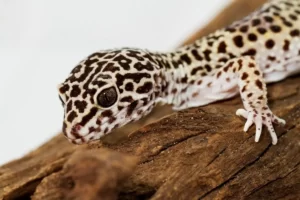Leopard geckos are fascinating pets to own and compared to other gecko species (most notably the tokay gecko) leopard geckos are generally pretty docile and are relatively easy to take care of.
They’re also pretty long-lived; it’s not unheard of for leopard geckos to reach 20 years of age.
If you’ve ever felt like your leopard gecko could benefit from having a larger area to explore, you may have considered the idea of buying a hamster ball for them to roll around in. This is generally not an advisable idea, as hamster balls aren’t really safe for a leopard gecko to move around in.
In this article, we’ll be going over why exactly it’s not such a good idea to let your gecko run around in a hamster ball, as well as some alternatives you can use if you want to give your gecko a little more space to explore and some general tips about caring for your leopard gecko.
Why Are Hamster Balls Unsafe for Leopard Geckos?

You might be wondering why it would be unsafe for a gecko to use a hamster ball since hamsters use them all the time seemingly without incident. In theory, shouldn’t any small animal be able to use a hamster ball safely?
The thing is, this theory assumes that hamster balls are safe for hamsters to begin with, which as it turns out is not the case. The biggest danger of hamster balls is the air slits; hamsters can easily get their claws and toes trapped in these slits as the ball turns, leading to leg injuries and even accidental amputations in the worst cases.
The same thing could potentially happen to your leopard gecko if you were to let them run around inside a hamster ball. In addition, even though your gecko can still technically move around wherever they want while in the ball, they’re still trapped in an enclosed space, which could potentially stress them out.
In addition, hamster balls are often fairly colorful, and being trapped inside a tight, brightly colored enclosure might stress your gecko out even further.
Can I Let My Leopard Gecko Run Around Freely?

Ok, so we’ve established that letting your leopard gecko run around in a hamster ball is a bad idea. But what if you were to simply let your gecko run around your home freely? How dangerous would that be?
While this answer probably won’t surprise you, it’s just as dangerous if not more so to let your gecko roam around your home at its leisure.
For one, it would make it a lot easier for your gecko to escape your home or get lost somewhere, and it also increases the possibility of you accidentally stepping on him at some point.
For two, geckos need to be in a temperature-controlled environment with the right level of humidity for them to remain healthy. If you were to let your gecko run around in your home completely unprotected, their health would likely take a bit of a decline.
How Do I Keep My Leopard Gecko Happy?

So, it’s not a good idea to let your leopard gecko run around your home, either freely or inside a hamster ball. What, then, can you do to make sure your gecko is happy and gets enough stimulation during the day?
The first and easiest thing is to make sure your gecko has a large enough enclosure. Leopard geckos need at minimum a 20-gallon tank to have enough room to be comfortable in, but obviously the more space they have the better. If you want to give your gecko more room to run around in, consider upgrading to a larger tank.
You also need to make sure that the environment inside your tank is as natural as possible so that your gecko feels comfortable and safe when they’re inside. To that end, your tank should have:
- Plenty of places to hide
- A container of fresh water large enough for your gecko to soak in
- A gradient of temperatures within the tank, ranging from 70 degrees to 90 degrees Fahrenheit
- A suitable substrate to use as the “ground” inside the tank
Look for the following signs if you want to determine whether your leopard gecko is happy and healthy:
- They have a healthy appetite
- They spend time in both the warm and cool halves of their tank
- They spend time actively exploring their tank
- They generally appear perky and alert
- Their movements are fluid and easy
- They react to visible movement
Final Thoughts
In the end, if you want to make sure that your leopard gecko is safe and sound then you need to be cautious about letting it run around inside a hamster ball. It’s just not an unsafe activity, and could potentially do more harm than good.
In addition, you should always make sure that your gecko has a large enough tank to move around freely in, and then give them plenty of objects to climb on and hide behind.
By following this advice you will be able to keep your gecko safe while also giving it plenty of stimulating activity during the day.
If you’re looking for more information about how to care for leopard geckos, just look here, because I’ve written all about it.
Until next time, happy gecko keeping!




